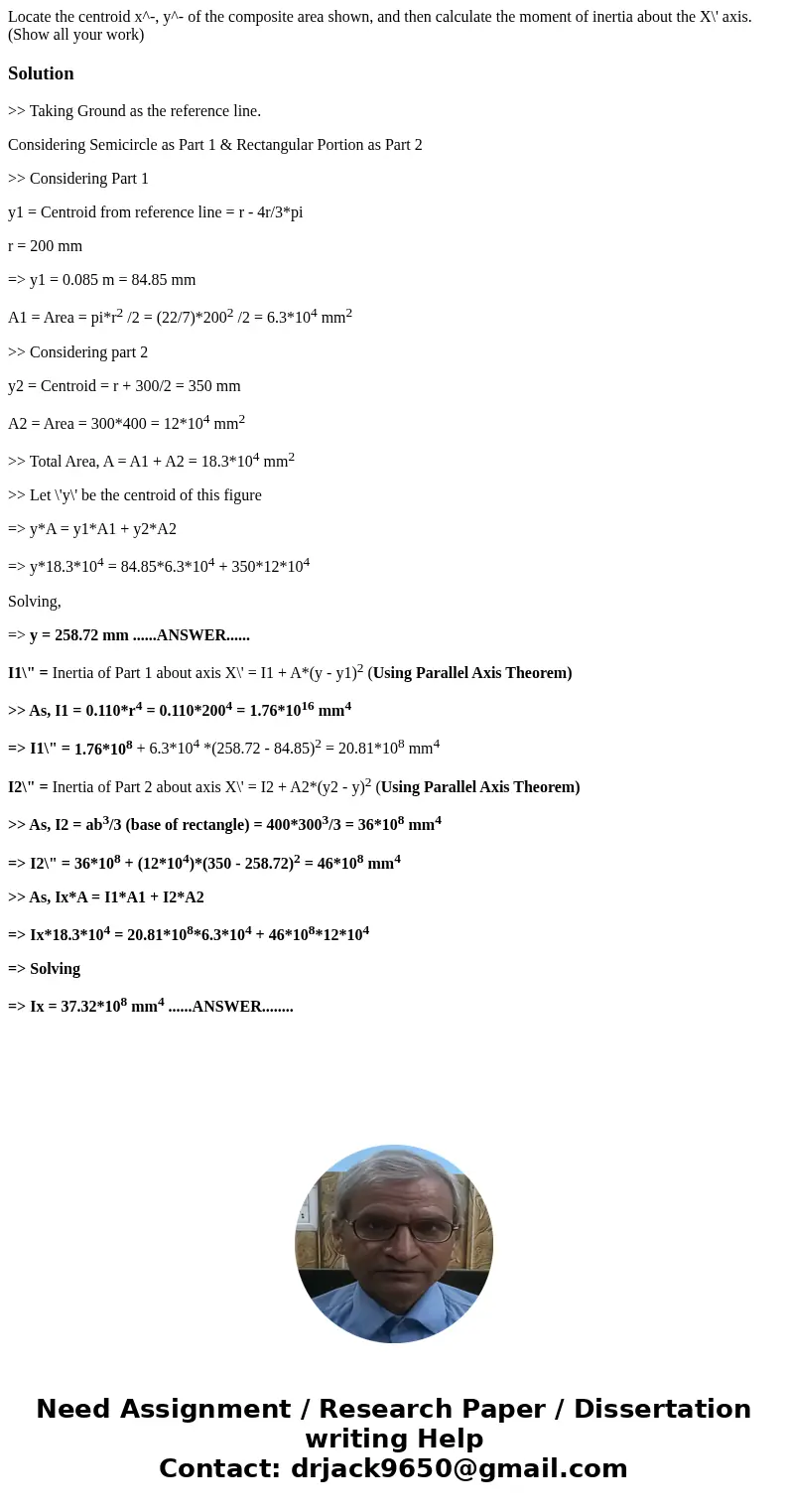Locate the centroid x y of the composite area shown and then
Solution
>> Taking Ground as the reference line.
Considering Semicircle as Part 1 & Rectangular Portion as Part 2
>> Considering Part 1
y1 = Centroid from reference line = r - 4r/3*pi
r = 200 mm
=> y1 = 0.085 m = 84.85 mm
A1 = Area = pi*r2 /2 = (22/7)*2002 /2 = 6.3*104 mm2
>> Considering part 2
y2 = Centroid = r + 300/2 = 350 mm
A2 = Area = 300*400 = 12*104 mm2
>> Total Area, A = A1 + A2 = 18.3*104 mm2
>> Let \'y\' be the centroid of this figure
=> y*A = y1*A1 + y2*A2
=> y*18.3*104 = 84.85*6.3*104 + 350*12*104
Solving,
=> y = 258.72 mm ......ANSWER......
I1\" = Inertia of Part 1 about axis X\' = I1 + A*(y - y1)2 (Using Parallel Axis Theorem)
>> As, I1 = 0.110*r4 = 0.110*2004 = 1.76*1016 mm4
=> I1\" = 1.76*108 + 6.3*104 *(258.72 - 84.85)2 = 20.81*108 mm4
I2\" = Inertia of Part 2 about axis X\' = I2 + A2*(y2 - y)2 (Using Parallel Axis Theorem)
>> As, I2 = ab3/3 (base of rectangle) = 400*3003/3 = 36*108 mm4
=> I2\" = 36*108 + (12*104)*(350 - 258.72)2 = 46*108 mm4
>> As, Ix*A = I1*A1 + I2*A2
=> Ix*18.3*104 = 20.81*108*6.3*104 + 46*108*12*104
=> Solving
=> Ix = 37.32*108 mm4 ......ANSWER........

 Homework Sourse
Homework Sourse